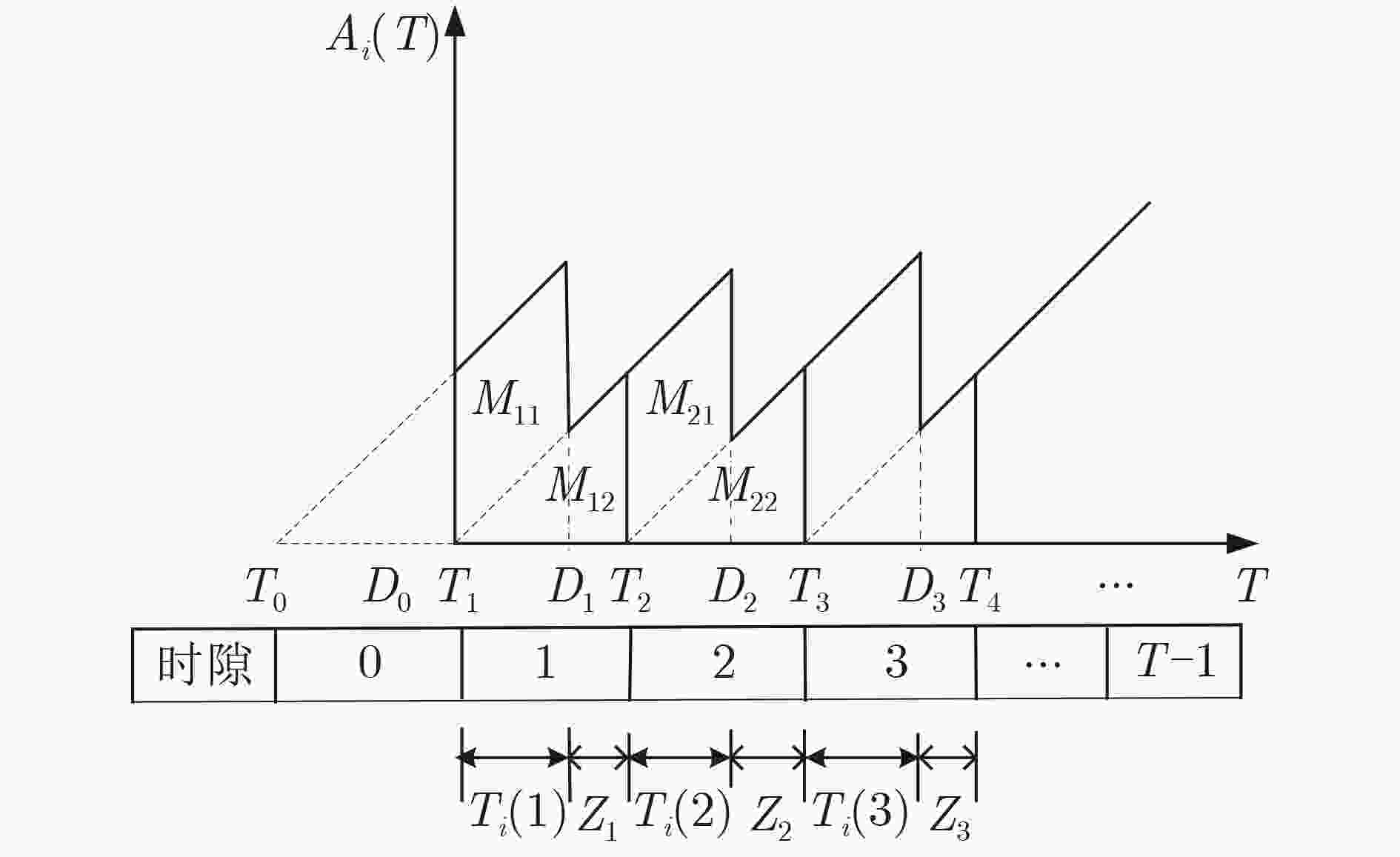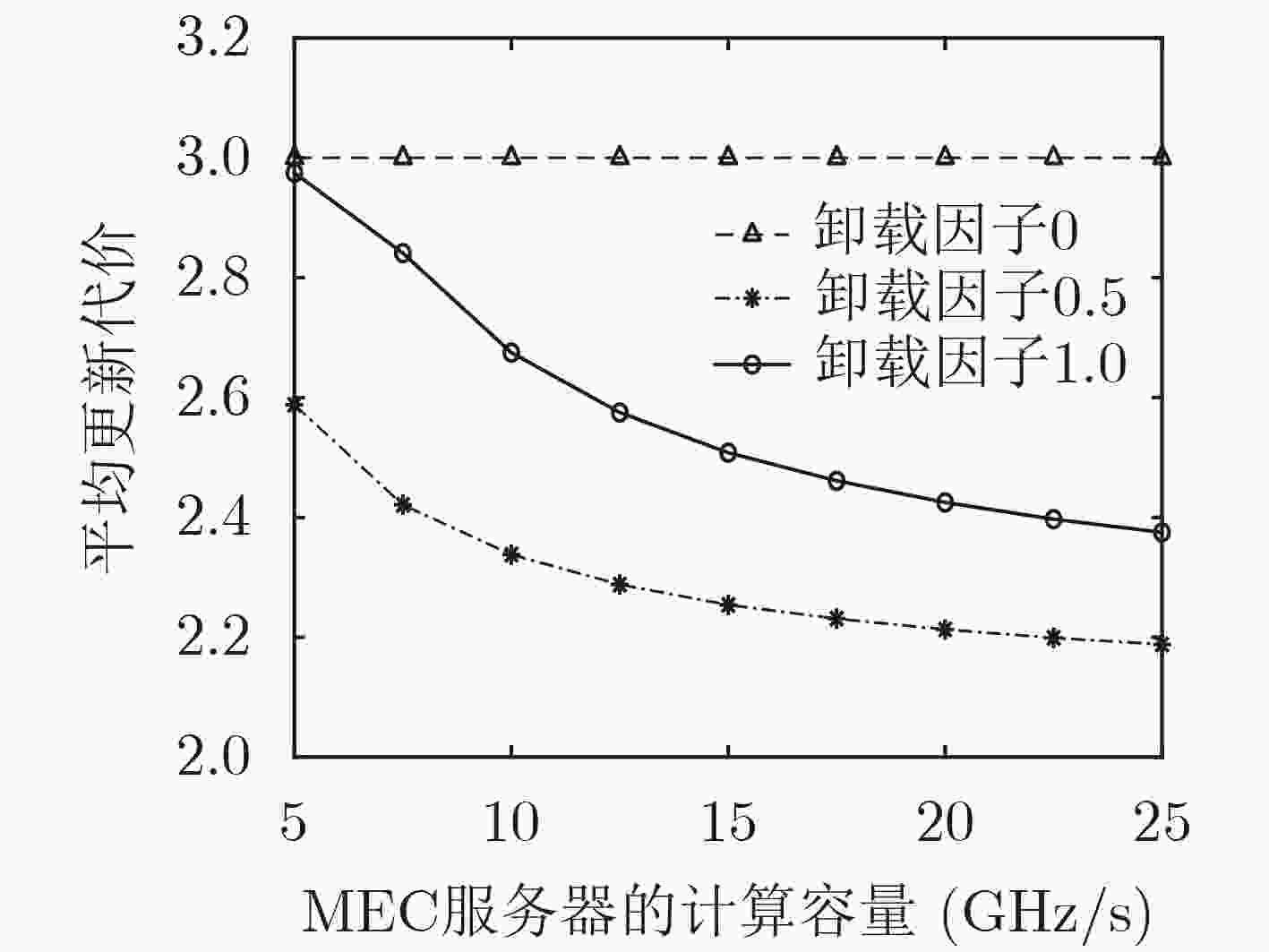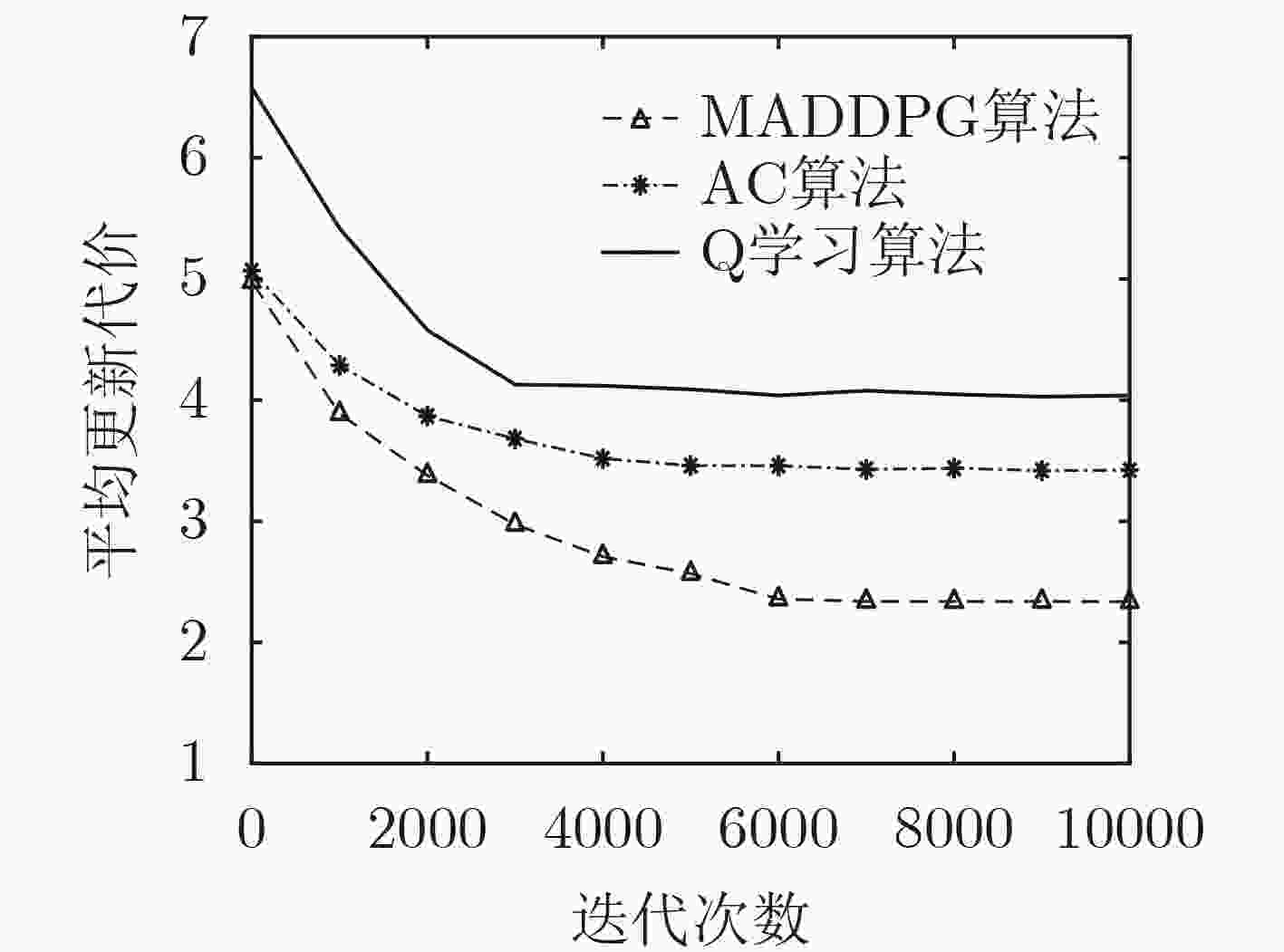Age of Information Updates in Non-Orthogonal Multiple Access-mobile Edge Computing System Based on Reinforcement Learning
-
摘要: 物联网发展对信息时效性的需求越来越高,信息新鲜度变得至关重要。为了维持信息新鲜度,在非正交多址接入(NOMA)和移动边缘计算(MEC)的联合系统中,对多设备单边缘计算服务器的传输场景进行了研究。在该场景中,如何分配卸载任务量和卸载功率以最小化平均更新代价是一个具有挑战性的问题。该文考虑到现实中的信道状态变化情况,基于多代理深度确定性策略梯度(MADDPG)算法,考虑信息新鲜度影响,建立了最小化平均更新代价的优化问题,提出一种寻找最优的卸载因子和卸载功率决策。仿真结果表明,采用部分卸载的方式可以有效地降低平均更新代价,利用MADDPG算法可以进一步优化卸载功率,经比较,MADDPG算法在降低平均更新代价方面优于其他方案,并且适当地减少设备数量在降低平均更新代价方面效果更好。
-
关键词:
- 非正交多址接入 /
- 移动边缘计算 /
- 信息年龄 /
- 多代理深度确定性策略梯度
Abstract: With the development of the Internet of Things, the demand for timeliness of information is increasing, and the freshness of information is becoming crucial. In order to maintain the freshness of information, the transmission scenario of multiple devices and single Mobile Edge Computing (MEC) server is studied in the joint system of Non-Orthogonal Multiple Access (NOMA) and MEC. In this scenario, how to allocate the amount of unload tasks and unload power to minimize the average update cost is a challenging problem. Considering the channel state variation in reality, an optimal unloading factor and unloading power decision are proposed based on Multi-Agent Deep Deterministic Policy Gradient (MADDPG) algorithm. Simulation results show that partial unloading can effectively reduce the average update cost, and MADDPG algorithm can further optimize the unloading power. By comparison, MADDPG algorithm is better than other schemes in reducing the average update cost, and the appropriate reduction of the number of equipment is better in reducing the average update cost. -
表 1 仿真参数设置
CPU周期 信道带宽 计算容量 CPU频率 干扰功率的代价 总干扰功率 $ 2 \times {10^3} $cycle/bit 2 MHz 10 GHz 0.2 GHz 0.1 20 W -
[1] KAUL S, YATES R, and GRUTESER M. Real-time status: How often should one update?[C]. 2012 IEEE INFOCOM, Orlando, USA, 2012: 2731–2735. [2] ZOU Peng, OZEL O, and SUBRAMANIAM S. Trading off computation with transmission in status update systems[C]. The IEEE 30th Annual International Symposium on Personal, Indoor and Mobile Radio Communications (PIMRC), Istanbul, Turkey, 2019: 1–6. [3] MAO Yuyi, YOU Changsheng, ZHANG Jun, et al. A survey on mobile edge computing: The communication perspective[J]. IEEE Communications Surveys & Tutorials, 2017, 19(4): 2322–2358. doi: 10.1109/COMST.2017.2745201 [4] LI Rui, MA Qian, GONG Jie, et al. Age of processing: Age-driven status sampling and processing offloading for edge-computing-enabled real-time IoT applications[J]. IEEE Internet of Things Journal, 2021, 8(19): 14471–14484. doi: 10.1109/JIOT.2021.3064055 [5] LIU Long, QIN Xiaoqi, TAO Yunzheng, et al. Timely updates in MEC-assisted status update systems: Joint task generation and computation offloading scheme[J]. China Communications, 2020, 17(8): 168–186. doi: 10.23919/JCC.2020.08.014 [6] SONG Xianxin, QIN Xiaoqi, TAO Yunzheng, et al. Age based task scheduling and computation offloading in mobile-edge computing systems[C]. 2019 IEEE Wireless Communications and Networking Conference Workshop (WCNCW), Marrakech, Morocco, 2019: 1–6. [7] ZENG Jie, LV Tiejun, LIU Renping, et al. Investigation on evolving single-carrier NOMA into multi-carrier NOMA in 5G[J]. IEEE Access, 2018, 6: 48268–48288. doi: 10.1109/ACCESS.2018.2868093 [8] MAATOUK A, ASSAAD M, and EPHREMIDES A. Minimizing the age of information: NOMA or OMA?[C]. 2019 IEEE Conference on Computer Communications Workshops (INFOCOM WKSHPS), Paris, France, 2019: 102–108. [9] WANG Qian, CHEN He, LI Yonghui, et al. Minimizing age of information via hybrid NOMA/OMA[C]. 2020 IEEE International Symposium on Information Theory (ISIT), Los Angeles, USA, 2020: 1753–1758. [10] CHEN Xiang, GONG Fengkui, LI Guo, et al. User pairing and pair scheduling in massive MIMO-NOMA systems[J]. IEEE Communications Letters, 2018, 22(4): 788–791. doi: 10.1109/LCOMM.2017.2776206 [11] DING Zhiguo, LIU Yuanwei, CHOI J, et al. Application of non-orthogonal multiple access in LTE and 5G networks[J]. IEEE Communications Magazine, 2017, 55(2): 185–191. doi: 10.1109/MCOM.2017.1500657CM [12] SAITO Y, KISHIYAMA Y, BENJEBBOUR A, et al. Non-Orthogonal Multiple Access (NOMA) for cellular future radio access[C]. The IEEE 77th Vehicular Technology Conference (VTC Spring), Dresden, Germany, 2013: 1–5. [13] ZHOU Bo and SAAD W. Joint status sampling and updating for minimizing age of information in the internet of things[J]. IEEE Transactions on Communications, 2019, 67(11): 7468–7482. doi: 10.1109/TCOMM.2019.2931538 [14] YU Yuehua, CHEN He, LI Yonghui, et al. On the performance of non-orthogonal multiple access in short-packet communications[J]. IEEE Communications Letters, 2018, 22(3): 590–593. doi: 10.1109/LCOMM.2017.2786252 [15] PAN Haoyuan, LIANG Jiaxin, LIEW S C, et al. Timely information update with nonorthogonal multiple access[J]. IEEE Transactions on Industrial Informatics, 2021, 17(6): 4096–4106. doi: 10.1109/TII.2020.3006061 [16] GÓMEZ J T, MORALES-CÉSPEDES M, ARMADA A G, et al. Minimizing age of information on NOMA communication schemes for vehicular communication applications[C]. The 12th International Symposium on Communication Systems, Networks and Digital Signal Processing (CSNDSP), Porto, Portugal, 2020: 1–6. [17] ELGABLI A, KHAN H, KROUKA M, et al. Reinforcement learning based scheduling algorithm for optimizing age of information in Ultra Reliable low latency networks[C]. 2019 IEEE Symposium on Computers and Communications (ISCC), Barcelona, Spain, 2019: 1–6. -






 下载:
下载:






 下载:
下载:
